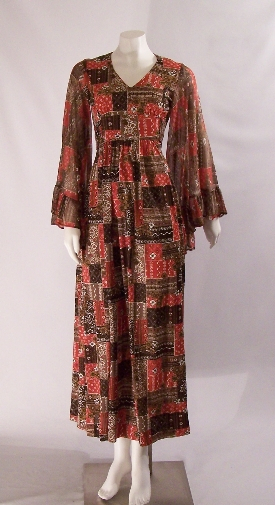Changing a pattern to a different size is called grading. This is different from altering a pattern, as altering usually involves just a single area. Making the bust bigger or smaller to fit is altering. Changing a pattern from a size 6 to a size 10 is grading. Since vintage patterns are often smaller than today's patterns, they often require grading to fit. This process can be complex, so you should be prepared to practice a bit.
There are many different ways to grade a sewing pattern, and many vintage pattern sellers provide links to tutorials that explain grading in detail. Take a look at these different tutorials, searing for one that deals with a pattern similar to the one you will be grading. If you want a general overview of sewing pattern grading, check out Megan Nielsen Design Diary. This can help you get started, but be wary of just applying the directions given without considering your specific vintage pattern.
The first time you grade a pattern, you should use a simple sewing pattern free of complicated details. A gently sloping A-line dress is usually a good place to start, though there are other simple patterns you might want to try. Depending on the pattern itself the the exact measurements, you may be required to do either an even or an uneven grade. The difference? Quite signicant, actually. An even grade is where you add the same amount (or subtract the same amount, if you're making the pattern smaller) from the bust, waist, and hips of the pattern. For an uneven grade, each area is adjusted by a different amount to account for varying body proportions. Given that today's people are not the same as the people of 75 years ago, it's entirely possible that you'll have to do an uneven grade when working with vintage patterns. Commonly, you'll have to make the bust a great deal larger, which usually means an uneven grade.
Before you begin grading a pattern, practice with some spare fabric. You don't want to ruin a more expensive fabric until you're certain you've done everything correctly. Don't be afraid to experiment, but always practice before tackling the final project.
Welcome to Aislin’s Designs—a cozy corner for crafters who love sewing, knitting, and crochet. Here you’ll find patterns, project ideas, tips, and tutorials to inspire your next handmade creation. Whether you're a beginner or seasoned maker, there's always something new to stitch, knit, or hook. Grab your yarn, thread your needle, and let’s get creative together!
Items posted on the main page are available for purchase unless otherwise indicated. If you'd like to purchase an item shown, send me a message indicating which country you live in and I'll quote you a shipping price. All payments are processed through Paypal only. If you're looking for a custom item, let me know the specifics and I'll quote you a total price. Custom items typically take 6 weeks to produce after payment is received. Keep this in mind when asking for custom orders.
